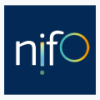NIFO’s Interoperability State-of-Play 2014 Report details all areas of progress and identifies the main challenges that administrations face when designing and implementing their National Interoperability Frameworks (NIFs). The State-of-Play 2014 analysis concludes that the alignment between EU countries’ NIFs with the European Interoperability Framework (EIF) is ‘very good’: the report measures an average alignment of 74% for 19 assessed countries. Of these countries, 5 reach over 90% alignment.
Compared to the previous measurement (previous State-of-Play Report), there has been an increase of 17,5% in the overall alignment. The main increases are found in the governance of interoperability (+23%) and in the principles of interoperability (+19%), two of the five elements of the EIF. However, the report highlights an increase in all of the elements.
The NIFO analytical model supports countries with the NIF comparison and alignment. The exercise analyses and identifies the gaps between the different aspects of the national frameworks and the EIF.
Different levels of maturity
‘A centralised regular monitoring of interoperability initiatives and a strong cooperation effort among public administrations are the basis for an effective NIF implementation’, the report says. There is a need to establish effective monitoring activities to ensure NIF implementation. The report identifies a wide divergence in the scores which reflects the different levels of maturity of the NIFs in the countries analysed.
Trends
‘Open data’ and ‘open technology’ are identified as trends in ways of improving interoperability in EU countries. Openness and reuse of government data, open specifications and open source are emphasised in many countries as interoperability initiatives.
Challenges
Among the challenges listed in the report are budgetary constraints, hindering the pursuing of current work or carrying out new initiatives. Legal aspects such as multiple and conflicting laws on base registries can hinder interoperability. Other challenges can be found in the area of semantics and multilingualism, and in the legacy technology in place.
The report also refers to identified best practices in NIF alignment with the EIF, in ways to implement NIFs and in their monitoring.
The Interoperability State-of-Play Report 2014 is published under the NIFO action of the ISA programme.
Nature of documentation: Independent reports and studies

